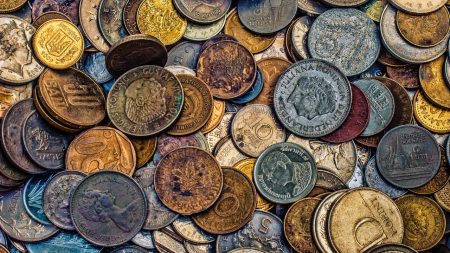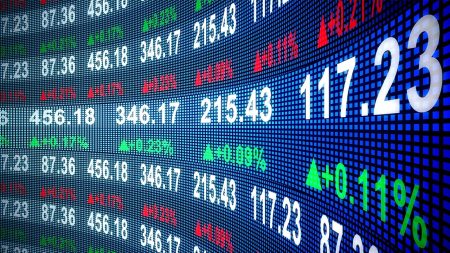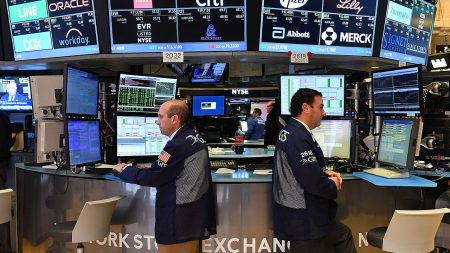You can’t predict the future, but you can try to predict — or hedge against — how much certain goods will cost when they arrive. A futures contract obligates a buyer to take delivery of a good, or commodity, on a specific date. On the other end of the contract is a seller who is responsible for delivering those items at a specified price.
Futures contracts are bought and sold on a wide range of commodities, currencies, interest rates and indexes, and they are a huge part of the financial industry. More than 29 billion futures contracts were traded in 2023, according to data from the Futures Industry Association (FIA).
How futures work
Think of a corn farmer who must lay out many thousands of dollars at the beginning of the planting season in hopes of selling at a profit when the harvest arrives. The farmer might use a futures contract to hedge exposure to lower prices at harvest. No matter what the actual price is when the corn is ripe, the farmer has locked in a price that guarantees a profit.
On the other end of that transaction might be a large food corporation that relies on corn for its products. To protect the business, it would buy that farmer’s contract to hedge against paying higher prices if there is a supply shortage.
Futures trade on an exchange such as the Chicago Mercantile Exchange, and a clearing house acts as an intermediary between buyers and sellers to guarantee the fulfillment of the contract at its expiration date. The contracts may not settle for weeks or months down the road, but the margin must be posted and maintained to ensure the integrity of the market.
Types of futures
- Commodities: Traders use commodity futures to hedge and speculate on the prices of commodities such as crude oil, natural gas, coffee, wheat and sugar.
- Precious metals: Futures contracts can also be traded based on the price of precious metals such as gold and silver.
- Indexes: You can also trade futures contracts based on the level of different market indices such as the S&P 500 index.
- Currencies: Traders or multinational companies might use currency futures to speculate or hedge their exposure to certain currencies such as the euro, U.S. dollar or Japanese yen.
- Interest rates: You might also use futures contracts to limit your exposure to rising or falling interest rates.
Costs and trading requirements
There is a cost to trading futures. Commodity funds, for example, don’t actually hold silos full of corn or tankers of oil. Instead, they hold futures contracts that must be rolled over prior to expiration. With the price of a good in the future generally higher than what it is now, they are forever buying futures contracts at higher prices, paying transaction fees, and then selling them prior to expiration at closer to spot level (current) prices. This is why you can see significant disparities between the price appreciation of commodities such as heating oil or natural gas, but a substantially lower or even negative rate of return on the mutual fund or exchange-traded fund that trades those futures rather than holding the actual commodity.
Trading requirements for futures contracts can vary from broker to broker, but they generally involve the use of leverage. Traders aren’t required to put up the entire value of a contract when they place their initial trade, but rather post an initial margin. If the trade moves against them, the broker may make a margin call, requiring them to put up additional funds.
Leverage magnifies returns, so it can be a major benefit when you’ve earned a profit, but can wipe you out quickly in the event of a loss.
Uses for futures
In addition to buyers and suppliers using futures to hedge and secure prices that work for their business models, futures are also used to speculate about where prices will go next. Traders might buy or sell a contract for those corn futures, but they have no desire to ever actually own any of the corn. Instead, they’re trying to capitalize on price swings. A futures contract can be bought and sold constantly until the expiration date. A trader, for example, might buy a futures contract on crude oil at 10:00 a.m. for $70 and sell it at 3:00 p.m. for $72.
Futures may offer a glimpse of what you ultimately pay for in a range of goods. In 2022, coffee and oil futures soared as supply and demand issues impacted their prices. Unseasonably cold weather in Brazil – the biggest coffee producer – led to the destruction of coffee trees, pushing prices higher, though they’ve since declined. Oil prices surged higher in the first half of 2022 as demand returned following the global pandemic and sanctions on Russia impacted supply, leading to higher gas prices at the pump.
Understanding the risk of futures
All investing comes with a degree of risk, but trading futures contracts can be a very treacherous path for individual investors with limited knowledge of how futures function.
Key risks of futures trading:
- Leverage:Brokers will allow customers to trade futures on margin, which effectively allows you to borrow money to place bigger bets. If that bet doesn’t pan out, you’re on the hook for a bigger sum of money than you may be ready to pay.
- Price swings: The main risk for futures traders is that the underlying asset that they hold the futures contract on moves in the opposite direction of their trade.
- Crypto futures: As new cryptocurrency funds come to market, be advised that these holdings largely consist of futures contracts — not the underlying cryptocurrencies, though there are now Bitcoin ETFs that hold the digital coin directly. The extreme level of volatility means that significant performance disparities are sure to result.
Futures vs. stocks
Futures and stocks are very different from each other. A futures contract is a derivative instrument that derives its value from the price of some underlying asset such as a commodity or market index. On the other hand, a stock represents an ownership stake in a real business and its value comes from the future earnings and cash flow expected to be generated by the business. A stock has no expiration date, whereas a futures contract does.
Futures vs. options
Futures and options are often placed in the same bucket when discussing investments, as they are both rooted in what-if price scenarios. However, there’s a critical distinction between the two. Options contracts are true to their name: The holder has the option to choose whether to exercise the option to buy or sell. Futures, on the other hand, must be executed. Neither party has the ability to turn down the contract.
Bottom line
Futures contracts are used by both hedgers and speculators alike. Hedgers may use futures to manage the risk they face from an asset’s price moving in a certain direction, while speculators may use the leverage available through futures trading to try to make a quick profit on the move in the price of a commodity or other asset.
Futures trading is somewhat complicated, so if you’re just starting out as an investor you might be better off finding a diversified, low-cost index fund that fits your needs.
— Bankrate’s Brian Baker contributed to an update of this story.
Read the full article here












